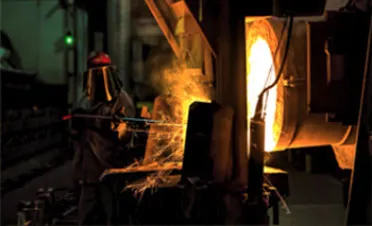custom machining
Custom Machining Precision Engineering for Unique Applications
In today’s rapidly changing technological landscape, the demand for precision engineering has reached new heights. At the heart of this demand is custom machining, a process that allows manufacturers to create unique components tailored to specific needs. This article will explore the fundamentals of custom machining, its advantages, techniques, and applications across various industries.
Understanding Custom Machining
Custom machining refers to the manufacturing process of creating parts or components that fit specific criteria or specifications. Unlike mass production, where identical parts are produced in bulk, custom machining focuses on producing unique pieces that meet clients' particular demands. These parts can be crafted from a variety of materials such as metals, plastics, and composites, using different machining methods.
The custom machining process typically begins with a detailed design, often created using Computer-Aided Design (CAD) software. This design is then translated into a set of instructions for CNC (Computer Numerical Control) machines, which are capable of executing highly precise cuts and shapes. The combination of advanced technology and skilled craftsmanship ensures that the final product meets all necessary specifications and tolerances.
Advantages of Custom Machining
One of the primary advantages of custom machining is the ability to achieve high precision and accuracy. In industries where tolerances are tight, even the slightest deviation can have significant implications. Custom machined parts can be manufactured to exact specifications, ensuring that they fit perfectly and perform as intended.
Another benefit is flexibility in design and production. Custom machining allows businesses to create parts that may not be readily available in the market or that need specific modifications to meet unique operational requirements. This adaptability is especially critical in industries like aerospace and automotive, where innovations and advancements occur at a rapid pace.
Cost-effectiveness is also a crucial factor. Although the initial costs for custom machined parts may be higher than mass-produced components, the long-term savings can be significant. Custom parts often lead to improved performance, reduced maintenance costs, and increased product lifespan. Moreover, manufacturers can minimize waste by producing only what is necessary, aligning with modern sustainability goals.
Machining Techniques
Custom machining encompasses a variety of techniques, each suited for different requirements and materials. Some of the most common methods include
custom machining

1. Turning This process involves rotating a material on a lathe and using a cutting tool to shape it. Turning is ideal for creating cylindrical parts and is widely used in industries from automotive to medical.
2. Milling Milling utilizes rotary cutters to remove material from a workpiece. This versatile method can create complex shapes and is suitable for various materials, making it a favorite in custom machining.
3. Drilling Drilling is used to create holes in a material. While it might seem simple, custom drilling requires precision to ensure that the holes match specifications closely, especially in assembly-line contexts.
4. Wire EDM Electrical Discharge Machining (EDM) uses electrical sparks to cut materials. Wire EDM is especially effective for intricate designs and hard materials, making it invaluable in industries requiring high precision.
5. 3D Printing An increasingly popular technique, additive manufacturing or 3D printing allows for the creation of complex geometries that traditional methods might struggle to achieve. This technique is often used for prototyping and low-volume production runs.
Applications Across Industries
Custom machining finds application in a multitude of sectors. In the aerospace industry, where safety and performance are paramount, precision-engineered components are critical. For the medical sector, custom parts for surgical tools and implants must meet stringent standards. The automotive industry relies on custom machining for specialized components that enhance vehicle performance and safety.
Additionally, custom machining plays a vital role in energy sectors, including renewable energy technologies like wind turbines and solar panels, where bespoke parts can improve efficiency and sustainability.
Conclusion
In a world where precision and customization are increasingly valued, custom machining stands out as a vital manufacturing process. Its ability to produce tailored solutions to meet specific needs not only enhances product quality but also drives innovation across various industries. As technology continues to evolve, custom machining will undoubtedly play an essential role in shaping the future of manufacturing. The combination of skilled craftsmanship, advanced technology, and an understanding of unique client needs positions custom machining as a cornerstone of modern engineering.
-
Pros & Cons of Sand Casting: Products & ApplicationsNewsAug.19,2025
-
Advanced Crawler Drilling Rig for Confined Spaces-Baoding Hairun Machinery And Equipment Trading Co., Ltd.NewsAug.18,2025
-
Crawler Drilling Rig- Baoding Hairun Machinery And Equipment Trading Co., Ltd.|Pneumatic Power,Frame-Supported DesignNewsAug.18,2025
-
Precision OEM Valve Body Castings for Superior PerformanceNewsAug.18,2025
-
Crawler Mounted Drill Rig - Baoding Hairun Machinery | Underground Drilling SolutionsNewsAug.18,2025
-
Crawler Mounted Drill Rig - Baoding Hairun | Pneumatic Safety, Mining EfficiencyNewsAug.17,2025















